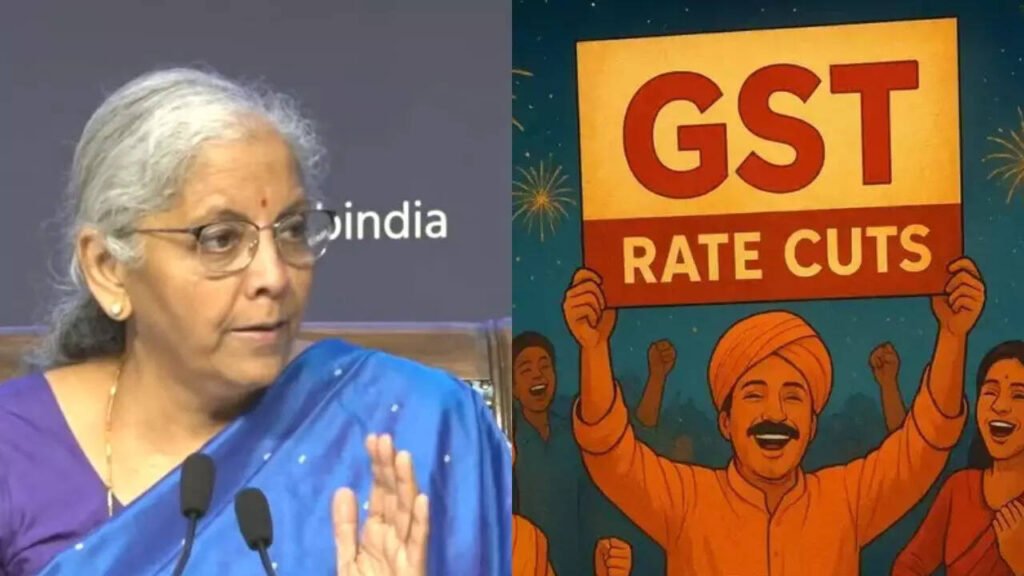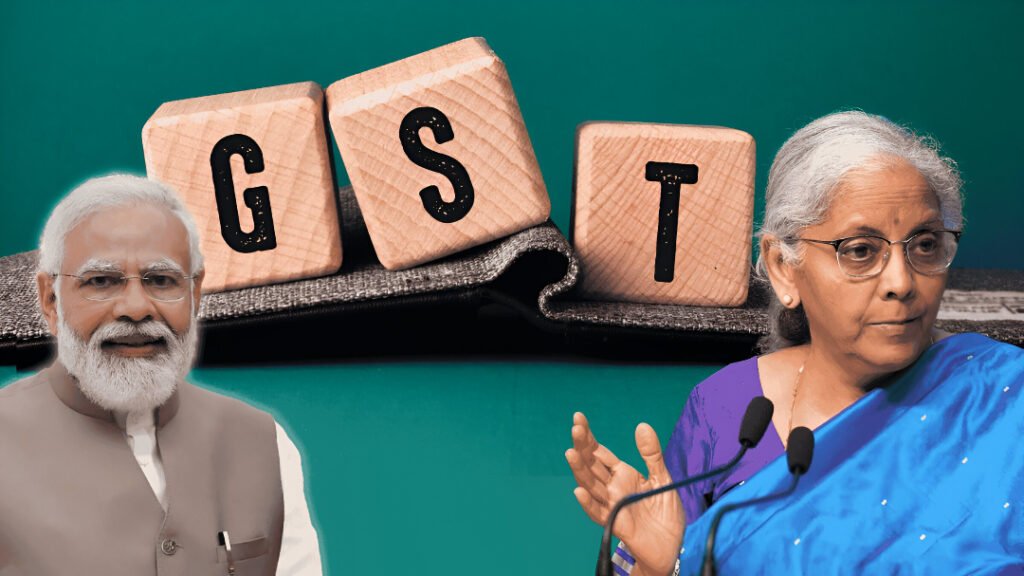
What happened: The GST Council approved a major rework of India’s indirect tax slabs on Sept. 3, 2025, collapsing multiple rates into a simplified two-tier structure: 5% and 18%, with the new rates scheduled to take effect from 22 September 2025. The move aims to cut consumer prices on many everyday goods while preserving higher taxes on discretionary and luxury items.
Why it matters to consumers and businesses
Why this matters:Millions of households will see changes at the billing counter: staples and many packaged consumer goods are being shifted down to 5%, while a wider set of manufactured and higher-end products will fall under 18%. Businesses must update billing systems, relabel prices, and adjust input-credit accounting; consumers can expect some relief in retail inflation but also a phased transition with short-term repricing noise.
Summary of the Council decision—scope & effective date
Council decision:The 56th GST Council recommended implementation of the two-rate model, and the Centre is set to notify the exact rate changes and legal text via CBIC notifications. The Council’s press release and government brief make clear the cutover date: 22 September 2025—just ahead of the festive season.
Items falling to 5%—essentials, daily-use packaged goods, and select services
5% highlights: The package of cuts is wide. Categories explicitly moved into the 5% bracket include many processed and packaged food items (ready-to-eat snacks, some dairy preparations), personal-care basics (toothpaste, hair oil), certain medicines and health supplies, and a range of everyday household goods. The Council also relaxed rates on services such as selected personal grooming (salons), gyms, and some category-limited transport fares (economy passenger travel rules vary). These changes are intended to reduce routine household expenditure.
Items taxed at 18%—non-essentials, appliances, mid-range apparel, and services
18% highlights: A broad swathe of consumer durables and non-essential goods now attract 18% GST. That includes electronics (TVs, mid-range appliances), many automotive components, cement and building materials in certain cases, and apparel above threshold prices (for example, garments priced above ₹2,500 were signalled as moving to 18% in reporting). Professional services, many hospitality segments beyond basic lodging, and certain financial services options also sit at 18% under the new matrix.

Exceptions & special treatments— “sin” goods and air travel nuance
Exceptions: The overhaul keeps very high rates for sin and luxury items—the Council introduced a separate high slab (public reporting references ~40%) for pan masala, tobacco products, and similar goods; these are outside the 5/18 split. Air travel retains a bifurcated approach: economy passenger travel may attract the lower rate where specified, while premium classes remain at higher rates, per Council FAQs.
Impact estimates—inflation, revenue, and industry reaction
Economic impact: The government estimates a manageable revenue hit from the cuts but expects a boost to consumption ahead of festivals. Reuters and Finance Ministry briefings point to a projected revenue shortfall (reported in public media as in the tens of thousands of crores) offset in part by higher volumes and compliance gains; industry groups have been urged to pass benefits to consumers. Traders and manufacturers face short-term compliance costs in repricing, labeling, and IT updates.
Practical guidance for consumers & businesses—what to do now
For consumers & retailers: Expect updated price tags and revised bills from 22 September. Retailers should update POS systems, notify suppliers, and communicate price changes clearly. Consumers should compare pre- and post-tax prices on big-ticket purchases; some items may see immediate markdowns, while others may be re-priced based on inventory and dealer margins. Businesses must watch for CBIC rate notifications and updated HSN/description codes.
Attribution & sources—official references and reporting
Sources used: This article is based on the GST Council press recommendations and PIB briefings, the CBIC rate-notification portal, and reporting from Reuters, Economic Times, Indian Express, and Times of India summarizing the 56th GST Council decisions and the lists of goods and services moving to 5% and 18% effective 22 Sept 2025. Readers should consult the official CBIC notification for exact HSN-level commands and any transitional clarifications.
Conclusion—How to Watch the Rollout
What’s next:Expect a tidal wave of circulars and FAQs from CBIC in the coming days clarifying exemptions, transitional credit rules, and detailed HSN classifications. Businesses should prioritize system updates and consumer communication; households can look forward to lower taxes on many staples but should check final price behavior at retail. The full CBIC rate notification is the decisive legal document—treat media lists as a guide until the gazette text is published.











